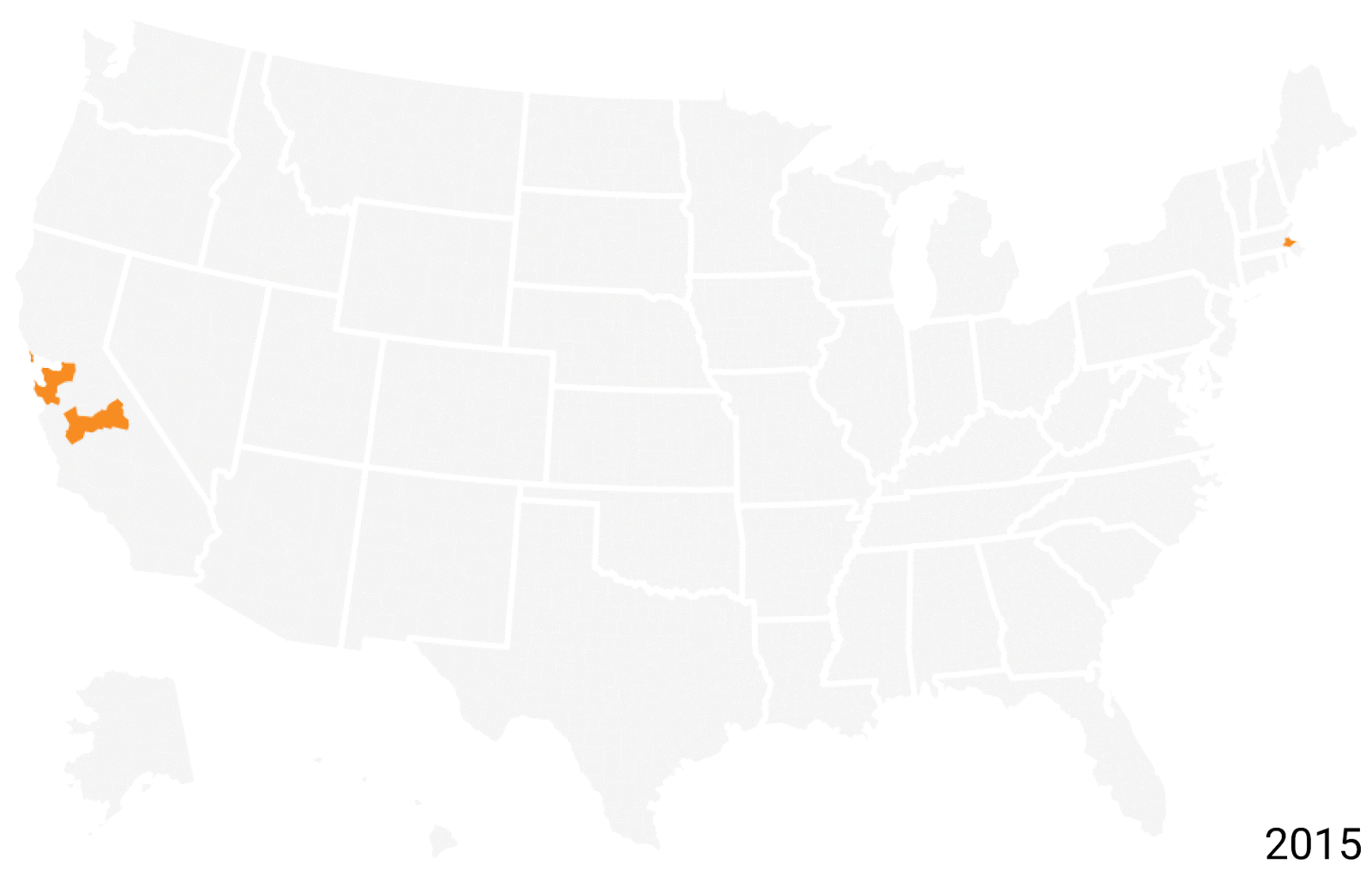
8 Million Homes
According to a new study, if the top U.S. cities identified as having the most solar rooftop potential were utilized, the country could produce enough to power 8 million homes across the country.
This statistic was released by Project Sunroof, which uses data from Google Maps and Google Earth, as well as 3D modeling and machine learning, to determine the potential impact of consistent adoption of solar power.
County-level solar coverage from 2015 – 2017

For their study, around 60 million buildings were analyzed, which provided key insight into the potential of solar energy in the U.S. According to their findings:
- 79 percent of rooftops included in the study can be used for solar power.
- In states like Hawaii, Arizona, Nevada, and New Mexico, 90 percent of homes can be utilized for solar power.
- States like Pennsylvania, Maine, and Minnesota still reach 60 percent viability for solar power generation.
- Houston, Texas, has the highest solar potential among all U.S. cities studied. Around 18,940 gigawatt hours (GWh) could potentially be produced if homes were converted to support solar generation.
- Other cities that show high potential for solar rooftop generation include Los Angeles, Phoenix, San Antonio, and New York.
Solar Perspective
Solar has long been known as an efficient and low-carbon source of electricity. But thus far, adoption has been limited because of cost. Recent advances in the field, however, saw the price of solar power and infrastructure drop dramatically, making it a viable, if not preferred, source of power generation.
According to the U.S. Energy Information Administration, the average U.S. home will consume 10,812 kilowatt hour (kWh) annually. There are one million kWh in one GWh, which means one GWh or energy will already be enough to supply power to 90 homes all year.
With global temperatures consistently hitting all time highs, the realities of are literally being felt all over the world. Efforts to address are becoming more crucial. A big part of this effort is centered on increasing use of renewable energy sources.
The world’s solar capacity is currently at 305 gigawatts, with countries like the U.S., China, and the United Kingdom leading the rest of Europe. Given the collective capacity of all countries, the amount of solar energy has nearly doubled since 2015. The city of New York, for example, has already increased its solar power use by over 800 percent, and California is boasting a 34 percent share of the overall country’s solar use.
Advancements in solar power technology, combined with these recent findings, underscore just how accessible sustainable and green energy can be these days. Where cost was once a barrier, a continued push to ensure that the technology becomes available to more and more people means the world can realistically shift from traditional carbon-emitting sources to renewables.